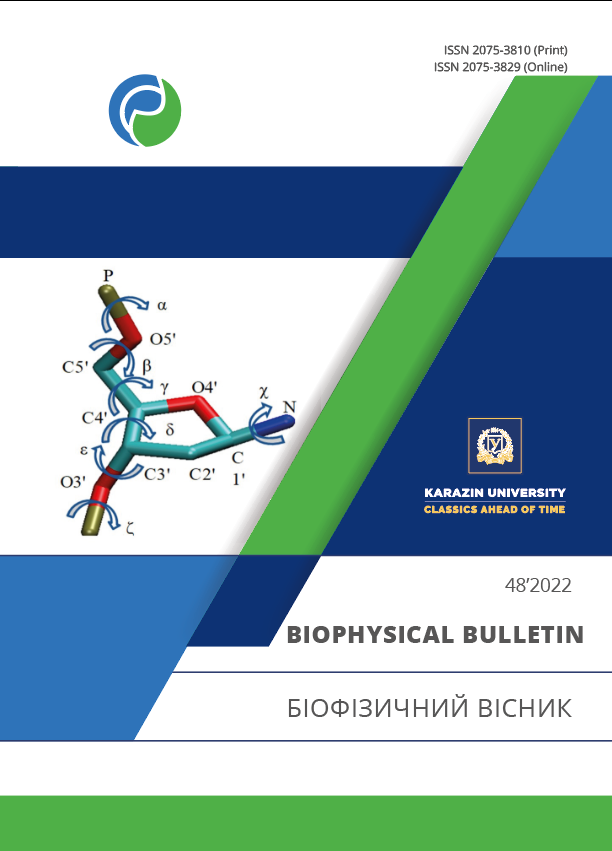Дослідження з палеогеноміки Сванте Паабо у контексті пост-академічних трансформацій сучасної технонауки (штрихи до портрету Нобелівського лауреата у соціокультурному контексті)
Анотація
Дослідження Сванте Паабо, Нобелівського лауреата з фізіології та медицини 2022 р., аналізуються у двох аспектах: по-перше, як найяскравіший приклад еволюційної трансформації класичної науки у постакадемічну технонауку і, по-друге, як елемент нового глобально-історичного феномену — «біополітичного повороту» у соціогуманітрному та політичному знанні технологічної цивілізації та, зокрема, у концепції «громадянського суспільства».
Завантаження
Посилання
The Nobel Assembly at the Karolinska Institutet has today decided to award the 2022 Nobel Prize in Physiology or Medicine to Svante Pääbo for his discoveries concerning the genomes of extinct hominins and human evolution [Internet]. Press release: The Nobel Prize in Physiology or Medicine 2022. [cited 2022 Dec 5]. Available from: https://www.nobelprize.org/uploads/2022/10/press-medicine2022.pdf
Ziman J. Real Science.Cambridge University Press; 2004. 84 p. https://doi.org/10.1017/cbo9780511541391
Latour B. Science in action: How to follow scientists and engineers through society. Harvard university press; 1987. 288 p.
Kuz O, Cheshko V. Philosophy of Science: the textbook. [Electronic edition]; 2017. (In Ukrainian). https://doi.org/10.13140/RG.2.2.17026.56009
Agamben G. Homo Sacer: Sovereign Power and Bare Life, Redwood City: Stanford University Press; 1998. 228 p. https://doi.org/10.1515/9780804764025
Kuz OM, Cheshko VF. The transbiopolitical trend of the COVID-19 pandemic: from political globalization to the politics of global evolution Politicus. 2021;3:122–30. (In Ukrainian) https://doi.org/10.24195/2414-9616.2021-3.19
Paabo S. Neanderthal Man: In Search of Lost Genomes Basic Books. 1 st ed. New York: Basic Books; 2014. 275 p.
De Waal F. The Bonobo and the Atheist: In Search of Humanism Among the Primates. New York: W. W. Norton & Company; 2013. 320 p.
Watson D, James D, Gann A, and Witkowski J. The annotated and illustrated double helix. Simon and Schuster; 2012. 368 p.
Paabo S. How the E19 protein of adenoviruses modulates the immune system. Uppsala: Acta Universitatis Upsaliensis; 1986. 230 p.
Paabo S. Imagine: an interview with Svante Paabo. Interview by Jane Gitschier. PLoS Genet. 2008 Mar 28;4(3):e1000035. https://doi.org/10.1371/journal.pgen.1000035
Elbe S. Bioinformational diplomacy: Global health emergencies, data sharing and sequential life. European Journal of International Relations. 2021;27(3):657–81. https://doi.org/10.1177/13540661211008204
Nowotny H, Scott P, Gibbons M.. Introduction: `Mode 2' Revisited: The New Production of Knowledge. Minerva. 2003;41:179–94. https://doi.org/10.1023/A:1025505528250
Paabo S. Molecular cloning of Ancient Egyptian mummy DNA. Nature. 1985 Apr 18–24;314(6012):644–5. https://doi.org/10.1038/314644a0
Krings M, Stone A, Schmitz RW, Krainitzki H, Stoneking M, Paabo S. Neandertal DNA sequences and the origin of modern humans. Cell. 1997 Jul 11; 90(1):19–30. https://doi.org/10.1016/s0092-8674(00)80310-4
Höss M, Pääbo S. DNA extraction from Pleistocene bones by a silica-based purification method. Nucleic Acids Res. 1993 Aug 11;21(16):3913–4. https://doi.org/10.1093/nar/21.16.3913
Maricic T, Paabo S. Optimization of 454 sequencing library preparation from small amounts of DNA permits sequence determination of both DNA strands. Biotechniques. Future Science Ltd; 2009 Jan;46(1):51–7. https://doi.org/10.2144/000113042
Green RE, Krause J, Briggs AW, Maricic T, Stenzel U, Kircher M, et al. A draft sequence of the Neandertal genome. Science. 2010 May 7;328(5979):710–22. https://doi.org/10.1126/science.1188021
Kuhlwilm M, Gronau I, Hubisz MJ, de Filippo C, Prado-Martinez J, Kircher M, et al. Ancient gene flow from early modern humans into Eastern Neanderthals. Nature. 2016 Feb 25;530(7591):429–33. https://doi.org/10.1038/nature16544
Reich D, Green RE, Kircher M, Krause J, Patterson N, Durand EY, et al. Genetic history of an archaic hominin group from Denisova Cave in Siberia. Nature. 2010;468:1053–60. https://doi.org/10.1038/nature09710
Krause J, Lalueza-Fox C, Orlando L, Enard W, Green RE, Burbano HA, et al. The derived FOXP2 variant of modern humans was shared with Neandertals. Curr Biol. 2007 Nov 6;17(21):1908–12. https://doi.org/10.1016/j.cub.2007.10.008
Zeberg H, Pääbo S. A genomic region associated with protection against severe COVID-19 is inherited from Neandertals. Proc Natl Acad Sci. 2021 Mar 2;118(9):e2026309118. https://doi.org/10.1073/PNAS.2026309118
Skov L, Peyrégne S, Popli D, Iasi LNM, Devièse T, Slon V, et al. Genetic insights into the social organization of Neanderthals. Nature. 2022;610:519–25. https://doi.org/10.1038/s41586-022-05283-y
Gross M. Neanderthals come to life. Current Biology. 2022;32(22):R1245–7. https://doi.org/10.1016/j.cub.2022.10.069
Scopus preview – Paabo S. – Author details – Scopus [Internet]. 2022 [updated 2022 Dec 14, cited 2023 Jan 23]. Available from: https://www.scopus.com/authid/detail.uri?authorId=7006151134
Scholar.google.com. Paabo S. [Internet]. 2022 [updated 2022 Dec 14, cited 2023 Jan 23]. Available from: https://scholar.google.ru/citations?user=_Urs-74AAAAJ
Reckwitz A. Society of Singularities. 1 st ed. Polity; 2020. 400 p.
Bruno L. Politics of nature: How to bring the sciences into democracy. Harvard University Press; 2004. 320 p.
Aaltola M. Understanding the Politics of Pandemic Emergencies in the time of COVID-19: An Introduction to Global Politosomatics. 1st ed. London: Routledge; 2022. 284 p. https://doi.org/10.4324/9781003169147
ten Have H, Patrão Neves M do C. Dictionary of Global Bioethics. Springer Verlag; 2021. 1063 p.
Siqueiros-García JM, Oliva-Sánchez PF, Saruwatari-Zavala G. Genomic sovereignty or the enemy within. Acta Bioethica; 2013 Nov;19(2):269–73. http://dx.doi.org/10.4067/S1726-569X2013000200011
Campbell B, and Manning J. The rise of victimhood culture: Microaggressions, Safe Spaces, and the New Culture Wars. 1st ed. Springer International Publishing; 2018. 305 p.
Burmeister S. Does the concept of genetic ancestry reinforce racism? A commentary on the discourse practice of archaeogenetics. TATuP [Internet]. 2021 Jul. 26;30(2):41–6. https://doi.org/10.14512/tatup.30.2.41
Автори, які публікуються у цьому журналі, погоджуються з наступними умовами:
- Автори залишають за собою право на авторство своєї роботи та передають журналу право першої публікації цієї роботи на умовах ліцензії Creative Commons Attribution License, котра дозволяє іншим особам вільно розповсюджувати опубліковану роботу з обов'язковим посиланням на авторів оригінальної роботи та першу публікацію роботи у цьому журналі.
- Автори мають право укладати самостійні додаткові угоди щодо неексклюзивного розповсюдження роботи у тому вигляді, в якому вона була опублікована цим журналом (наприклад, розміщувати роботу в електронному сховищі установи або публікувати у складі монографії), за умови збереження посилання на першу публікацію роботи у цьому журналі.
- Політика журналу дозволяє і заохочує розміщення авторами в мережі Інтернет (наприклад, у сховищах установ або на особистих веб-сайтах) рукопису роботи, як до подання цього рукопису до редакції, так і під час його редакційного опрацювання, оскільки це сприяє виникненню продуктивної наукової дискусії та позитивно позначається на оперативності та динаміці цитування опублікованої роботи (див. The Effect of Open Access).





